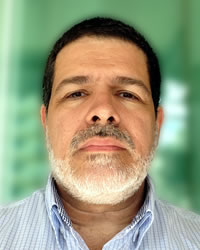

|
||
|
||
I attended the 46th ICANN meeting in Beijing, China, and made a statementat on the panel “Internet Governance – The Global Agenda”, questioning the limits of the multistakeholder model, or more precisely the “bottom” of the bottom-up concept.
My expectation was enormous, just at the time when two important meetings on governance and information society are in evidence: the WCIT and WSIS +10.
The panel was very interesting, important topics were presented, mainly on two events: WCIT and WSIS +10. Throughout the panel several keywords were used as “multistakeholder”, “enhanced cooperation”, “bottom-up”, “one world one Internet”, and some others. I tend to be aware of the use of keywords as the recurrent use expressions that can naturalize gradually carry itself more manifest than latent content.
I sat next to Everton Lucero, ICANN Stakeholder Management Manager Brazil and Rodrigo de la Parra, vice president of ICANN for Latin America and the Caribbean, when I said then that would do a provocation, and went to the microphone. I waited patiently for my turn, and at the right time shot my teasing:
When we speak about Bottom-Up, which Bottom is that we are talking about?
There was certain excitement of the participants, who must have wondered about which bottom I was talking about, and decided to complete.
I ask this because we have identified similar problem in Brazil with our activism in favor to “Marco Civil da Internet”. I’m Activists and strive to keep the Internet free, neutral and universal. However we began to realize that we have a serious communication problem, talking to an expert audience when should we talk to anyone. Our parliament are prepared for this debate? Our Academy is apt for this debate? What about civil society? Understand my concern?
I was surprised with the reaction of the presenters for this question, the silence was absolute, and I was sure that my teasing was objective and effective. After the silence, Tarek Kamel responded by describing the multistakeholder model and the proposed working of bottom-up at ICANN.
Obviously my time was short to expose my concern in detail, and the response that Tarek Kamel gave did not meet my expectations.
The issue is more complex and has a deep relationship with the pronouncement of Fadi Chehadé, CEO of ICANN, which he claims its necessary for a deep engagement of activists to keep the Internet free. Additionally I realized that ICANN has moved to be recognized as a transnational organization rather than an organization subordinate to the American State Department, as the perception of many nowadays.
In the book “The Art of War” by Sun Tzu there was a very interesting philosophy that paved my activism strategy: “Know yourself and your enemy and win all battles.” This also serves to your target audience and not just to enemies. In this very specific case it is necessary to know ICANN, and not only as we know, but how it is perceived by those outside this, and to know who are the interlocutors with whom we wish to interact.
When I asked if our politicians, academics and civil society are able to participate in the Internet governance debate and realized that most of them are not, I was thinking of how to change this.
There is a strategic issue in activism that is the political fact, without the help of the media, the only way to create a political fact is mobilizing a large number of people. In political issues as we are experiencing at the moment, in terms of Internet Governance, a good way to face the power of the lobby of the big corporations and authoritarian governments are to show that the “bottom” is on the other side.
I’m not saying that we should fill stadiums with ICANN meetings, but we must educate our interlocutors, and give them the opportunity to have a real and consistent bottom-up experience—the stronger bottom is the better one.
In addition, to better impact and involve our interlocutors, we need to work the message to fit every niche, aiming to strengthen the basis for a free Internet. These interlocutors in the case of ICANN are not just civil society, but the “bottoms” of each arm of the multistakeholder model.
I intend to continue this debate at the Durban meeting, and then Buenos Aires, and so on, until we know what “bottom” we are talking about.
Note: There was one strategical plan working group at LACRALO that identified some of this issues.
Sponsored byVerisign

Sponsored byIPv4.Global

Sponsored byWhoisXML API

Sponsored byDNIB.com

Sponsored byCSC

Sponsored byVerisign

Sponsored byRadix
